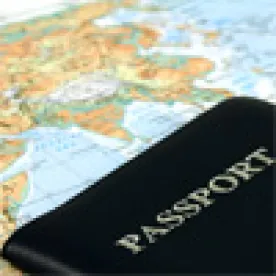U.S. Lawful Permanent Residents (LPRs) have the privilege and benefit of freely traveling to and from the United States. However, there are some limitations. First, if you are absent from the United States for more than one year, an LPR can be deemed to have abandoned his LPR status. Second, if an LPR takes up residence in another country (even if he has not been absent from the United States for more than one year), then he can still be deemed to have abandoned his LPR status. This is particularly problematic for LPRs who frequently travel internationally and sometimes their work does not allow them to regularly return to the United States.
A solution is for the LPR to obtain a re-entry permit. A re-entry permit allows an LPR to apply for admission to the United States upon returning from a trip abroad, and more importantly, it shows to the U.S. government that the LPR did not intend to abandon his LPR status. Re-entry permits are typically valid for two years. Thus, a re-entry permit is especially useful for an LPR who is planning to travel outside the U.S. for one year or more.
To apply for a re-entry permit, the LPR should file Form I-131 and submit the required filing fee. As of August 2014, the filing fee is $360 plus a biometrics service fee of $85 (for applicants ages 14 to 79), bringing the sum total to $445. Another important detail to note is that the LPR must be physically present in the United States when he files Form I-131. USCIS recommends that the LPR file his Form I-131 and supporting documentation at least 60 days before the LPR intends to travel abroad.
A logical follow-up question is: Once the LPR files Form I-131, can he leave the United States? The answer is yes and no. Technically, the LPR does not need to be in the United States in order for USCIS to approve Form I-131. In fact, the LPR may even indicate on Form I-131 that he would like the re-entry permit mailed overseas to a U.S. Embassy or Consulate for pick-up. However, in order to obtain an approval, the LPR must submit his biometrics – and the biometrics appointments are generally scheduled a few weeks after Form I-131 has been submitted. Unfortunately, the LPR cannot submit his biometrics while outside the United States. If an LPR leaves the United States before submitting his biometrics, then USCIS may deny his Form I-131.
Thus, if you are an LPR who intends to travel outside the United States for more than a year, then it’s best to plan a two – three month stay in the United States and file for your I-131 re-entry permit so that you have time to submit your application and biometrics. A helpful summary and FAQ sheet on re-entry permits can be found on USCIS’s website.


 />i
/>i


